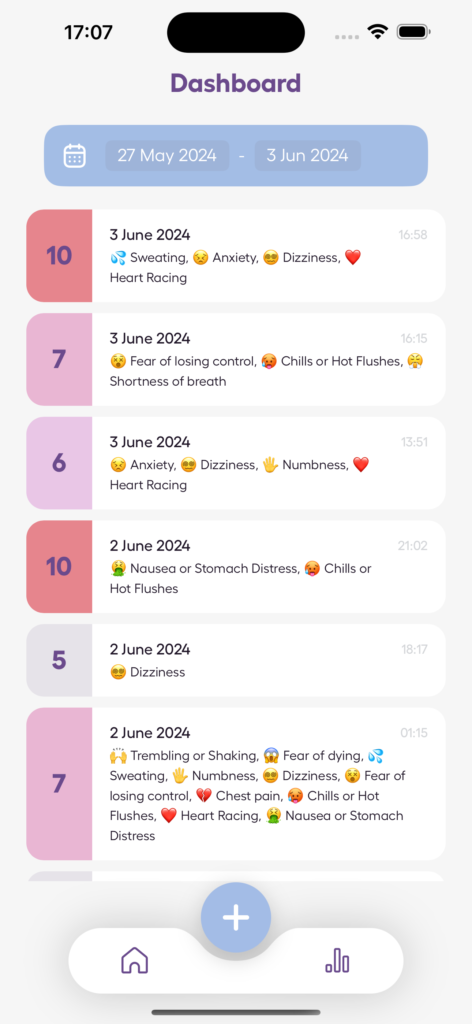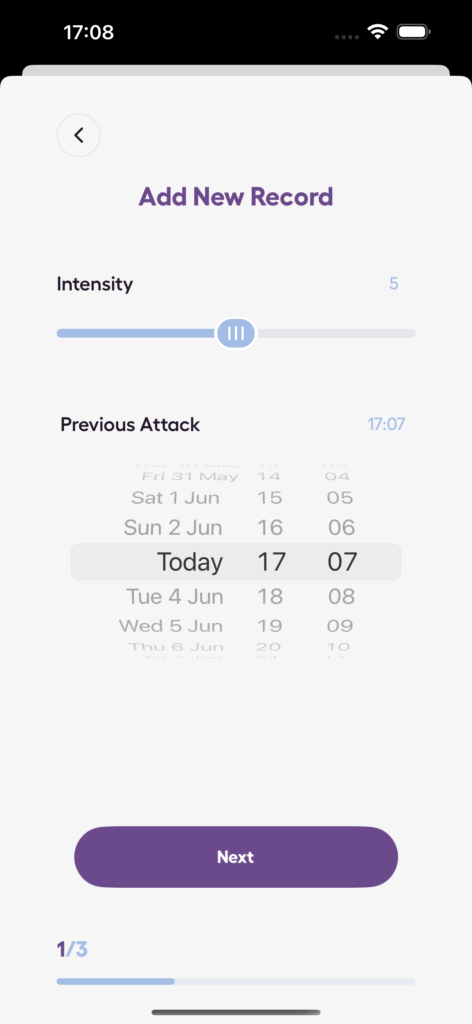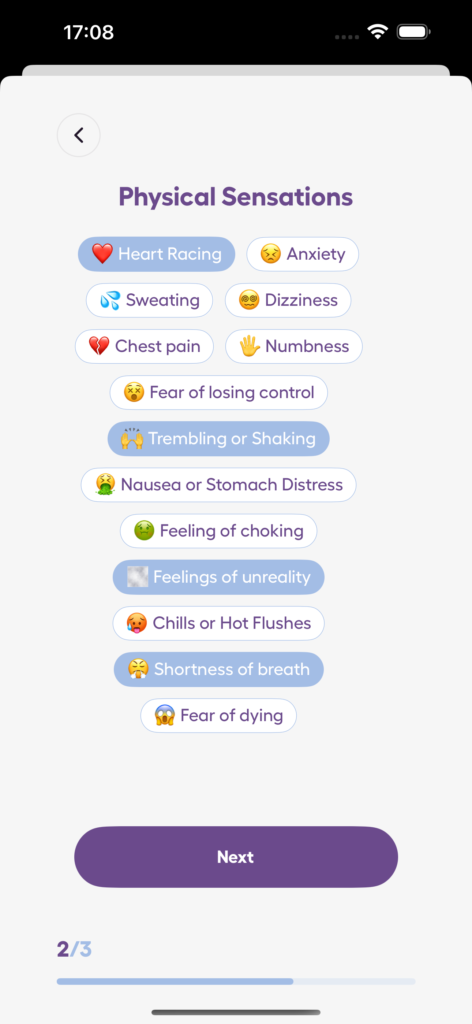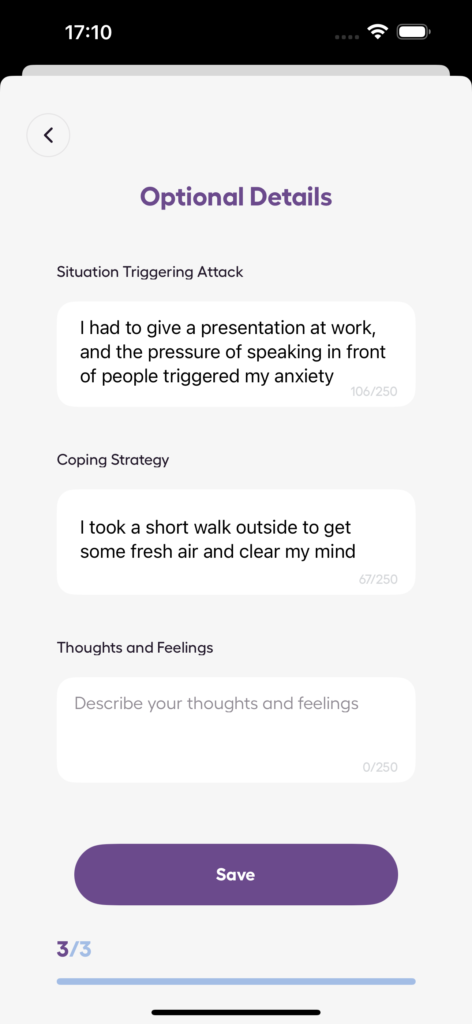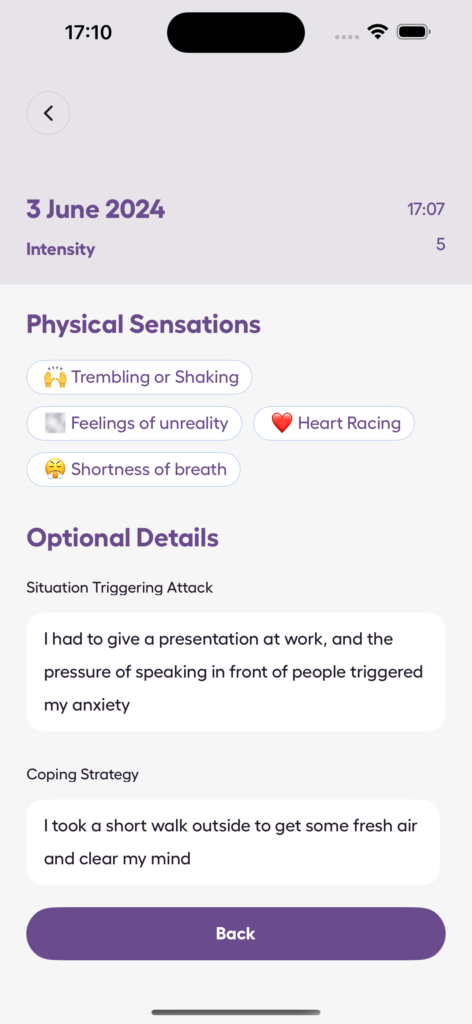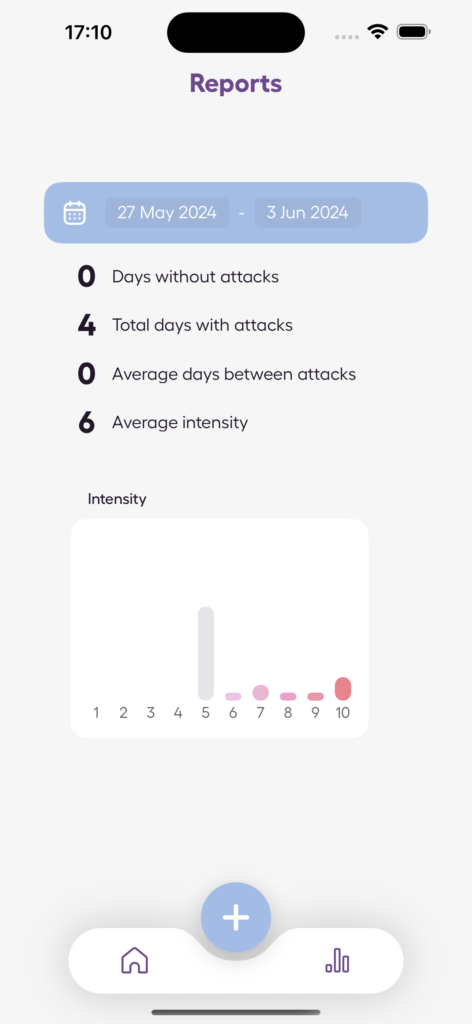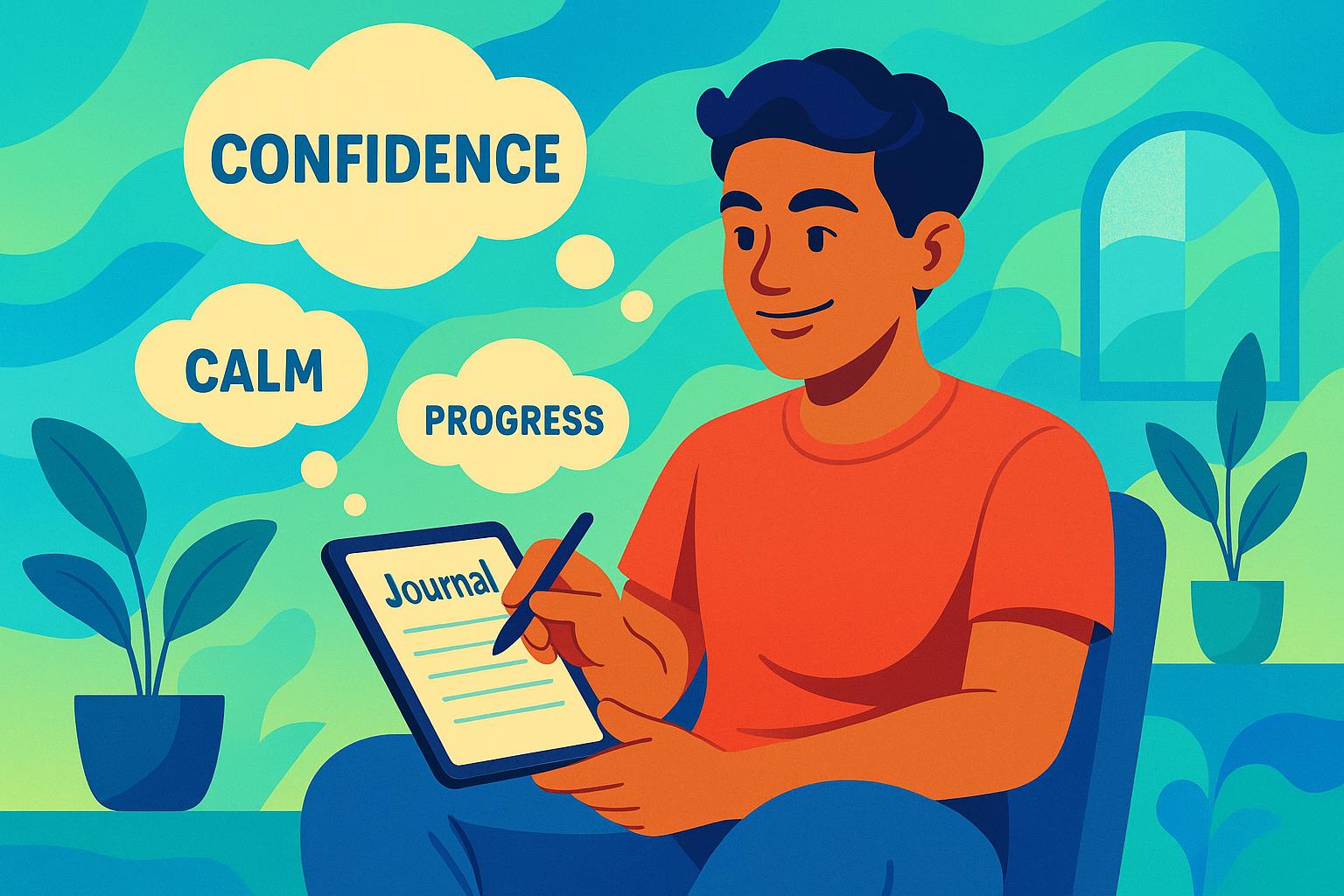Yes, strength training can help with panic attacks. Research shows that resistance training reduces stress hormones like cortisol, boosts mood-enhancing chemicals like serotonin, and builds mental resilience. It also improves confidence and mindfulness, making it easier to manage anxiety and panic symptoms.
Key Benefits of Strength Training for Panic Attacks:
- Hormonal Balance: Lowers stress hormones and increases calming chemicals.
- Mental Resilience: Builds confidence and coping skills through progressive overload.
- Mindfulness: Acts as active meditation, helping you stay present and reduce stress.
How to Start:
- Begin with simple exercises like bodyweight squats or resistance band pulls.
- Train 2-3 times per week, focusing on all major muscle groups.
- Track your progress and adjust intensity gradually.
Pairing strength training with mindfulness, tracking tools, and professional guidance can maximize its benefits for anxiety management.
Using Strength Training To Battle Depression And Anxiety
How Strength Training Affects Anxiety and Panic Attacks
Physical Changes: Hormonal Balance
Strength training doesn’t just build muscle – it helps regulate hormones that play a big role in managing anxiety and panic attacks. By lowering baseline cortisol levels, it reduces stress and anxiety triggers. At the same time, it increases mood-boosting chemicals like endorphins and serotonin, providing a calming effect that can last for hours after a workout.
Experts suggest training three times a week, focusing on 5-6 exercises with progressive overload for the best results. Using machines and free weights tends to offer better outcomes compared to relying solely on elastic bands or bodyweight exercises.
But the benefits don’t stop at the physical level. Strength training also brings about powerful mental changes.
Mental Benefits: Building Confidence and Coping Skills
Strength training strengthens more than just your body – it builds mental resilience, helping you handle stress and anxiety more effectively. Research from 2023 even suggests resistance training can rival traditional anxiety treatments, offering similar benefits to running therapy while also improving physical health.
Here are some standout mental benefits:
- Tackling tough exercises boosts your confidence, which can carry over to managing life’s challenges.
- Improved body awareness helps you notice and address anxiety symptoms early.
- Progressive overload – gradually increasing the difficulty of your workouts – teaches your mind and body to adapt to stress, making you better equipped to handle pressure.
To get the most out of your training, stay consistent and focus on proper form. Strength training mimics controlled stress, preparing you to face real-life pressures with greater ease.
sbb-itb-b1dedcc
How to Add Strength Training to Your Anxiety Routine
Beginner Exercises to Get Started
You don’t need fancy equipment or a gym membership to start strength training. Begin with simple moves like bodyweight squats, modified push-ups, and resistance band pulls. These exercises help you build confidence, improve form, and understand how your body moves. While resistance bands are helpful, incorporating weights can boost the mental health benefits. Stick to 2-3 sets of 8-12 reps for each exercise, focusing on proper form rather than rushing or lifting heavy.
Making a Routine and Sticking to It
The Mayo Clinic suggests at least 150 minutes of moderate activity each week, which should include strength training for all major muscle groups at least twice weekly. Plan for 2-3 sessions a week and cover all major muscle groups. Start small and build gradually to create a routine that works for your schedule and anxiety management.
Paying Attention to Your Limits
Pay attention to your body’s signals. Signs like extended muscle soreness, trouble sleeping, worsening anxiety, or lingering fatigue could mean you’re overdoing it. Start with lighter exercises and increase the intensity as your strength improves. If you’re unsure about technique or which exercises to choose, working with a fitness professional familiar with anxiety management can be helpful.
Consistency is key. Over time, these exercises can ease the physical and mental effects of panic attacks. Once you’ve built a steady routine, you can combine strength training with other anxiety management strategies for even better results.
Combining Strength Training with Other Anxiety Tools
Adding Mindfulness and Meditation
Pairing strength training with mindfulness can make a big difference. Start your workout with 5-10 minutes of mindful breathing to center yourself. During exercises, focus on counting repetitions or paying attention to how your muscles feel as they engage. This simple practice helps ease tension and keeps your mind on the task at hand. Studies show that mindfulness-based stress reduction programs, when combined with physical activity, can greatly reduce anxiety symptoms. Mindfulness during workouts is just one way to stay in tune with your progress – tracking tools can offer even more detailed insights.
Tracking Progress with Tools Like Anxiety Journal
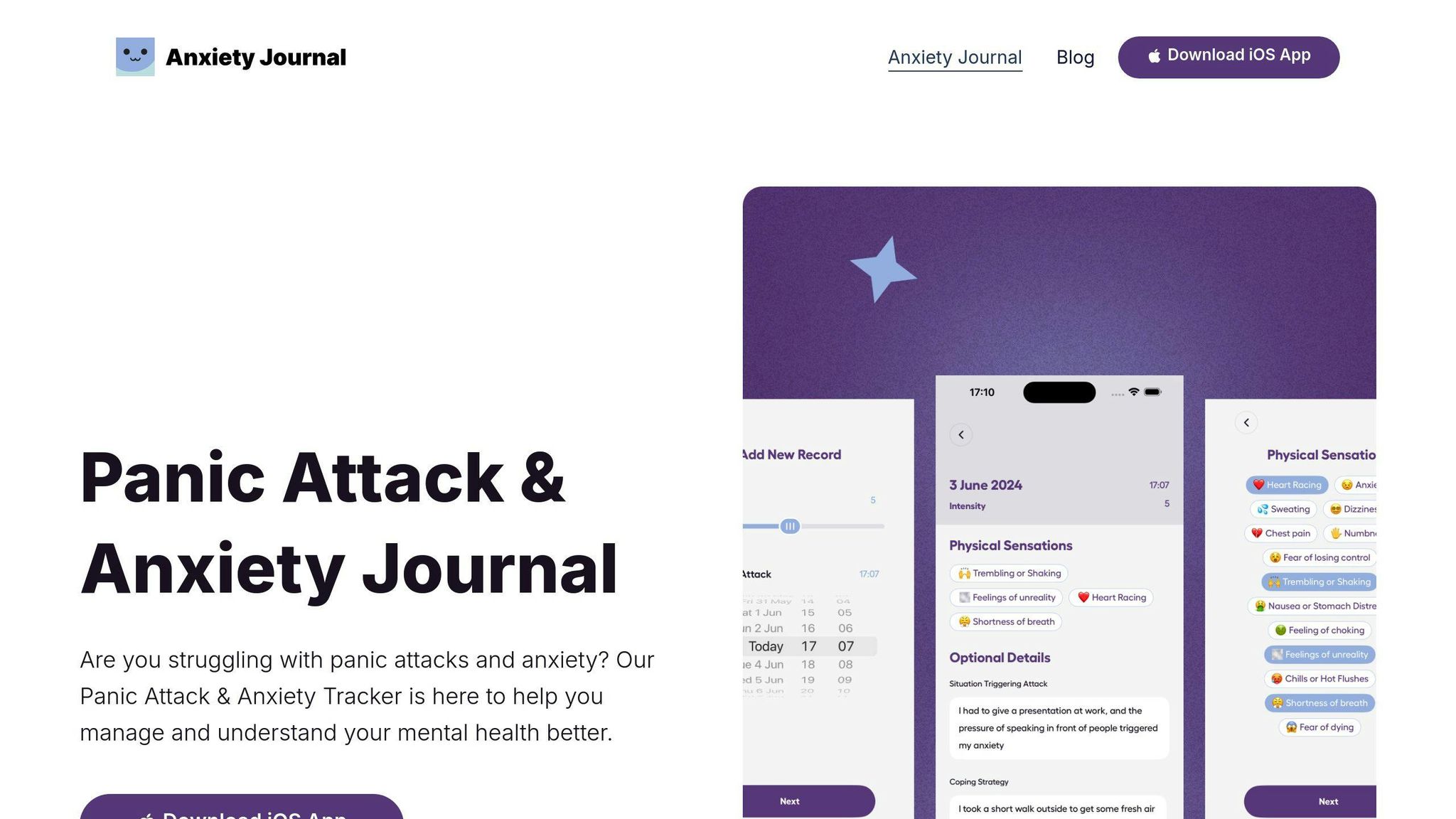
Keeping track of anxiety levels alongside your strength training routine can help you figure out what works best. The Anxiety Journal app lets you log panic attacks, monitor stress levels, and note how your anxiety changes before and after workouts. By regularly recording this information, you’ll gain a clearer picture of how different exercises affect your mental well-being. This data-driven approach makes it easier to fine-tune your routine for the best mental health outcomes.
Getting Help from Mental Health Professionals
Working with a mental health professional can take your anxiety management efforts to the next level. They can guide you in ways such as:
- Adjusting the intensity of your workouts to match your current anxiety levels
- Adding relaxation techniques to your exercise routine
- Setting fitness goals that align with your mental health needs
- Knowing when to modify or take a break from training
Research suggests that doing three strength training sessions per week, with three sets per exercise, yields the best results for mental health. A mental health professional can help you work toward this goal while ensuring you don’t push yourself too hard, physically or mentally.
Strength Training as Part of Panic Attack Management
Key Takeaways
Strength training can play a crucial role in managing panic attacks by improving both physical and mental well-being. Studies indicate that regular resistance training can positively impact mental health, making it a helpful addition to your anxiety management plan. Consistency is essential – try to include at least two sessions per week that target major muscle groups. Beyond physical benefits, strength training helps build mental resilience, which can be incredibly useful in handling panic attacks.
While strength training is helpful on its own, combining it with other tools and support systems can make it even more effective.
Building a Support System
Having a reliable support system can make a big difference in sticking with your strength training routine and using it to manage panic attacks. You might consider working with certified personal trainers who understand anxiety-related challenges or joining group fitness classes where you can connect with others in a supportive environment. Tracking your progress and leaning on a community can enhance the mental health benefits of your workouts.
Here are some ways to create a well-rounded approach:
- Check-ins with professionals: Regular appointments with mental health experts can help you fine-tune your routine as needed.
- Track your progress: Use tools like the Anxiety Journal app or join fitness communities to stay motivated and monitor improvements.
- Get expert help: Work with trainers who are knowledgeable about anxiety to ensure you’re using proper techniques and advancing safely.
Start with exercises you enjoy and gradually build up the intensity. Combining strength training with expert advice and tracking tools can provide a solid strategy for managing panic attacks effectively.


